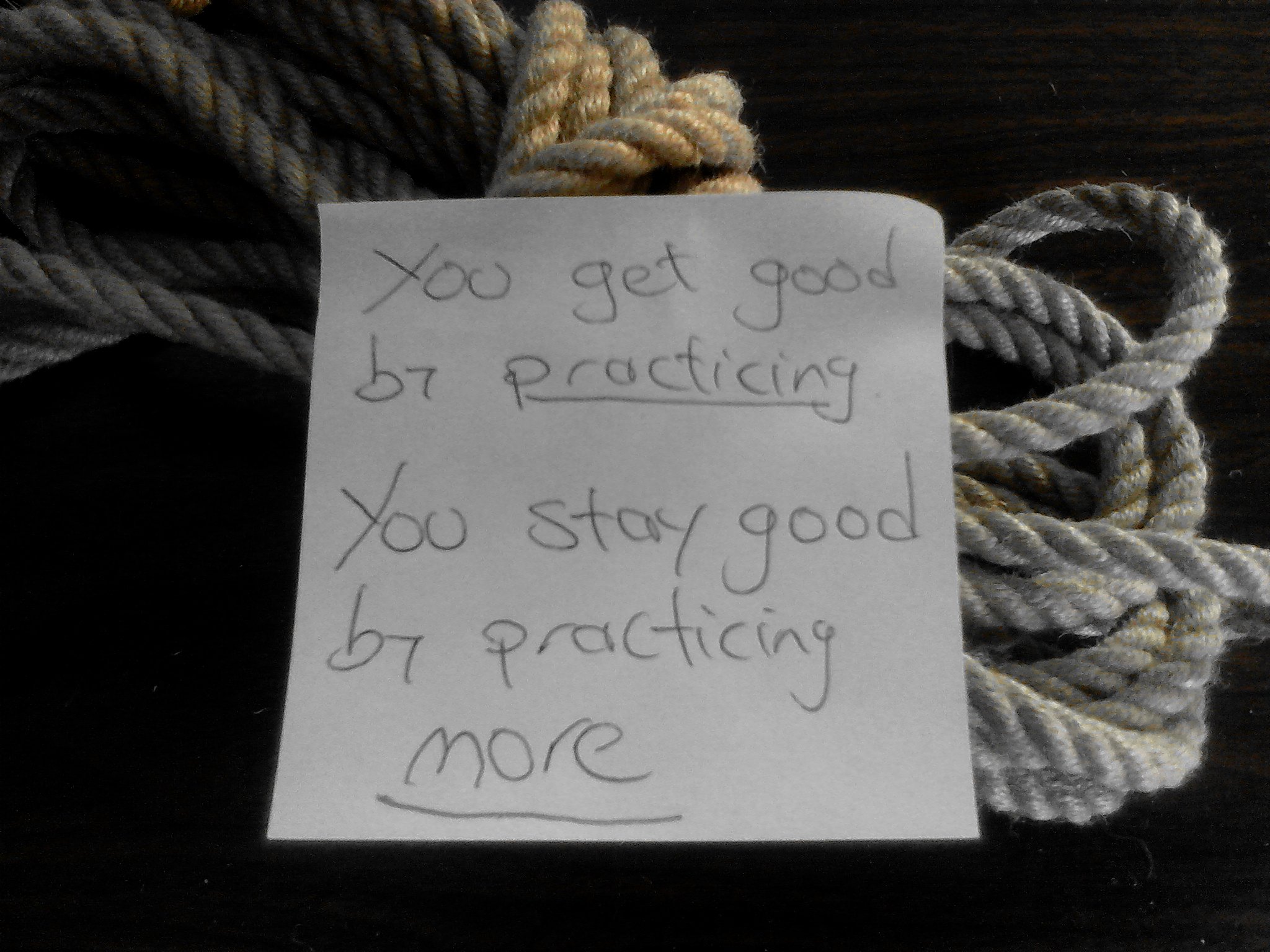
How To Practice Rope Effectively:
The rope x tables is intended to give you an exercise program that helps you practice the core rope skills and techniques, so that you get better faster and in a more organized way.
Pro-Tip: Practice tying slowly at first, to get the details right. Speed comes with further practice. Once details and speed feel natural, utilize the below maxims for greatest effect.
Principles of Sexy and Effective Rope Tying
1. Tying slowly, with attention to how and where the rope passes over skin, increases the sensual mood.
2. Tying quickly, with forceful movements of the rope and the body, increases the aggressive mood.
3. Moving the bottom around with your rope and your body increases the overall dominance of the interaction.
4. The more physical contact you yourself have with the bottom as they are tied, the more intimate and personal your interaction will feel, whether sensual or aggressive in tone.
Rope X Tables
Try and practice these at least twice a week while you’re learning them, and then at least once a fortnight to maintain the skills.
Using a model, or someone to tie, is the best way to practice, but there are plenty of tips below to help you circumvent that if you want to surprise someone with your skills or if you just don’t have anyone handy.
Single Column Tie: (can be practiced on your ankle, a chair arm or chair leg, etc)
Skills practiced:
– tying rope to a person
– using a non-slip knot
– finger hooking technique
Double Column Tie: can be practiced most easily on your crossed legs. If practicing on another person, remember to leave a little space between the wrists for cinch room. Can also use what I call the Baelish maneuver (your little finger as a hook device) if you run low on finger hooking space.
Skills practiced:
– tying one thing to another thing securely
-cinching
-non-slip knot
Secondary Column Tie :
Easily practiced on own legs or by attaching one thing to another thing.
Skills practiced:
– Creating and utilising half hitches (very useful)
– finger hooking
– Using a closed half hitch to finish a tie (also very useful)
– Creating a non-tightening column tie with the middle of your rope (INVALUABLE SKILL)
Futomomo:
Easily practiced on your own bent leg.
Skills practiced:
– using different width bands (less or more wraps) to adjust for comfort
– frictions, twists, and munter hitches
– finishing off a tie with a cow hitch
– aesthetics (through using symmetrical hitches or twists)
– Adding on rope (larks head or sheet bend)
Arm/Leg Binder
Can be practiced on own legs. Start with a two column tie on ankles if moving up, or a single column tie around the waist if going down.
When practicing on someone else, start with a harness or band around chest if going down, or two column tie around wrists if going up.
Skills practiced:
– using reverse tension to create wraps
– maintaining tension with one hand while wrapping with the other
– aesthetics (symmetrical frictions)
– practicing joint safety (wrapping below and above joints, but never on; adjusting to suit the comfort of the bottom
– monitoring for pins and needles and numbness
– Assessing tightness of wraps
– Rope laddering (useful for when you need more support than a double column tie)
Harness:
Difficult to practice on self; I recommend either someone else, or a computer chair or similar. If practicing on a chair or non-person, then you won’t be able to use some of the skills (e.g. changing the mood of the interaction) but you can still practice patterns and speed.
Skills practiced:
– knowledge of anatomy (placing rope over muscles, not in dips; avoidance of brachial nerve plexus (armpit) and radial nerve lines (between muscle groups, lower part of upper arm); avoidance of lower ribs (“floating” ribs) )
– creating load bearing bands through multiple wraps of rope
– frictions (tightly compacted; bands against the stem)
– aesthetics (symmetical frictions, employment of symmetrical twists or munter hitches)
– Cinching (can use different styles of cinching to create the harness, including collarbone cinches)
– Using rope as sensation play (sliding rope slowly over skin to tease at sensitive areas e.g. neck or nipple)
– “Dressing” rope (smoothing a finger beneath the wraps to smooth out gaps between ropes and move twists to the back where they won’t cause trouble).
– Checking hands for circulation (pinch test, checking temperature)
– Tying off using the Quick Fix tie off, vining, or cow hitch.

